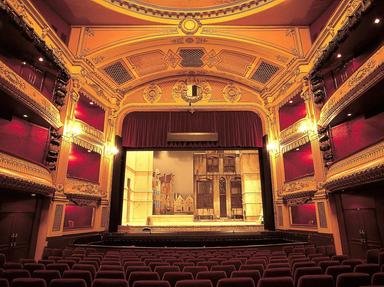28. Juggling has been around for several thousand years. During the decline of the Roman empire, however, this art was banned. Why was this?
From Quiz Assorted Performing Arts
Answer:
Jugglers were accused of practising witchcraft
The skill of juggling has been found depicted on various pieces of pottery and walls of tombs going right back to 2700 BC. In the early part of the Roman Empire it was still a popular means of entertainment, but when that empire began to decline, jugglers, known as gleemen then, were also a casualty. They were accused of being immoral and practising witchcraft. It would be several hundred years before they re-emerged as a form of public entertainment, and for some time after that, jugglers were mainly associated with circus acts. By 1947 an International Jugglers Association had been formed, and, by the year 2000, an annual World Juggling Day was being celebrated right around the globe.






 Quick Question
Quick Question = Top 5% Rated Quiz,
= Top 5% Rated Quiz,